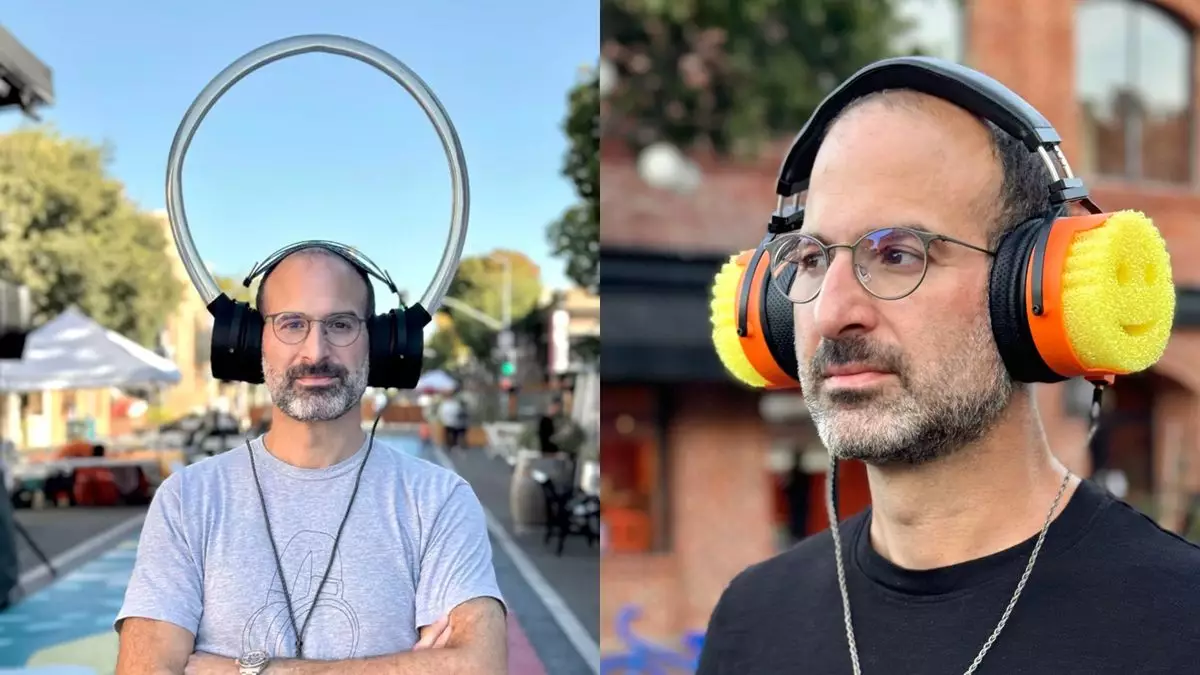Phillip, the visionary behind Pud’s Small Batch Headphones, has consistently captured the imagination of audio enthusiasts with his audacious designs that blur the lines between functionality and eccentricity. His latest creations showcase an audacious approach to headphone design, where aesthetics and acoustic engineering unite in a celebration of creativity. While his previous work, the Ol’ Thumpy headphones, already established his reputation for the outrageous, his most recent projects push the bounds of both sound and style.
Headphones as Art: The Vision Behind ‘Moon’
One of Phillip’s latest designs, aptly named ‘Moon,’ embodies a striking juxtaposition of avant-gardism and practical acoustics. Its unusual rubber-tubed structure resembles a halo, presenting an otherworldly aesthetic reminiscent of whimsical fantasy artwork. Yet, beneath its quirky facade lies an intriguing balance of engineering prowess and a quest for a natural auditory experience.
Phillip articulates his vision effectively, stating, “When you listen to music through speakers, both ears capture the full stereo image. However, traditional headphones can hinder this experience by isolating sound to each ear.” This insight reveals an understanding of the auditory experience that many headphone manufacturers overlook. By incorporating a 1-inch silicone tube that connects both sides of the headphones, he sought to recreate the immersed sensation of live music or speaker playback. By bridging the sonic gap, ‘Moon’ invites listeners to a pioneering experience that resembles listening to music in a live setting.
However, one cannot overlook the whimsical aesthetic choice of melded engineering and quirky design. Phillip has artfully crafted a product that, while impressive in its acoustic design, challenges societal norms of what headphones should look like. The striking appearance prompts questions about style versus functionality, ultimately leading to a rich discourse on the nature of contemporary design.
In a stark contrast to ‘Moon,’ Phillip’s second creation, dubbed ‘Scrub Daddy,’ charms with its playful and colorful design inspired by household sponges. Coated in bright neon yellow and orange, these headphones evoke a blend of construction site chic and playful nostalgia. They’re a whimsical nod to mundane items that many would overlook, demonstrating Phillip’s ability to transform the ordinary into the extraordinary.
The innovative approach to materials is what makes this new design particularly fascinating. Phillip utilized two Scrub Daddy sponges, typically found in the cleaning aisle, and expertly repurposed them for acoustic engineering. His experimentation reveals a profound understanding of sound dynamics, showcasing how different shapes and materials can influence audio properties. “I was pleasantly surprised by how much the Scrub Daddies improved sound,” he states, indicating a meticulous process of trial and error that is the hallmark of a true artisan.
Moreover, the acoustic measurements Phillip shared signal that these unconventional materials might just defy skepticism and challenge preconceived norms of audio gear. With reports of their sound performance closely matching target curves—with only minor deviations in mid-bass frequencies—it becomes evident that innovation can stem from unexpected places. This kind of originality invites conversations on sustainability in design, emphasizing how everyday objects can find new life and function.
As we observe Phillip’s striking creations, we’re forced to reconsider the standards of headphone design in an age where audio quality and aesthetic appeal are often prioritized independently. His work not only transcends the notion of headphones as mere audio devices but repositions them as artful expressions that spark discussion and evoke emotion.
In an industry saturated with uniformity, Phillip stands apart, wielding his creativity not as a constraint but as a guiding force that redefines the typical boundaries of what headphones can be. His ability to intertwine the whimsical with the practical fosters a culture of innovation that could inspire a new wave of designers to think outside the proverbial box.
The potential implications of Phillip’s designs extend far beyond mere personal enjoyment; they challenge the industry as a whole to embrace avant-garde thinking while enhancing consumer appreciation for sound. With every quirky creation, Phillip boldly positions himself as both an artist and an innovator, heralding a revolution in audio experiences that blend the absurd with the sublime.
In closing, one can only wonder what thrilling concepts Phillip will conjure next. It’s clear that while the idea of headphones may seem straightforward, Phillip’s explorations remind us that audio innovation can—and should—be a canvas for creativity that inspires both sound and style.

